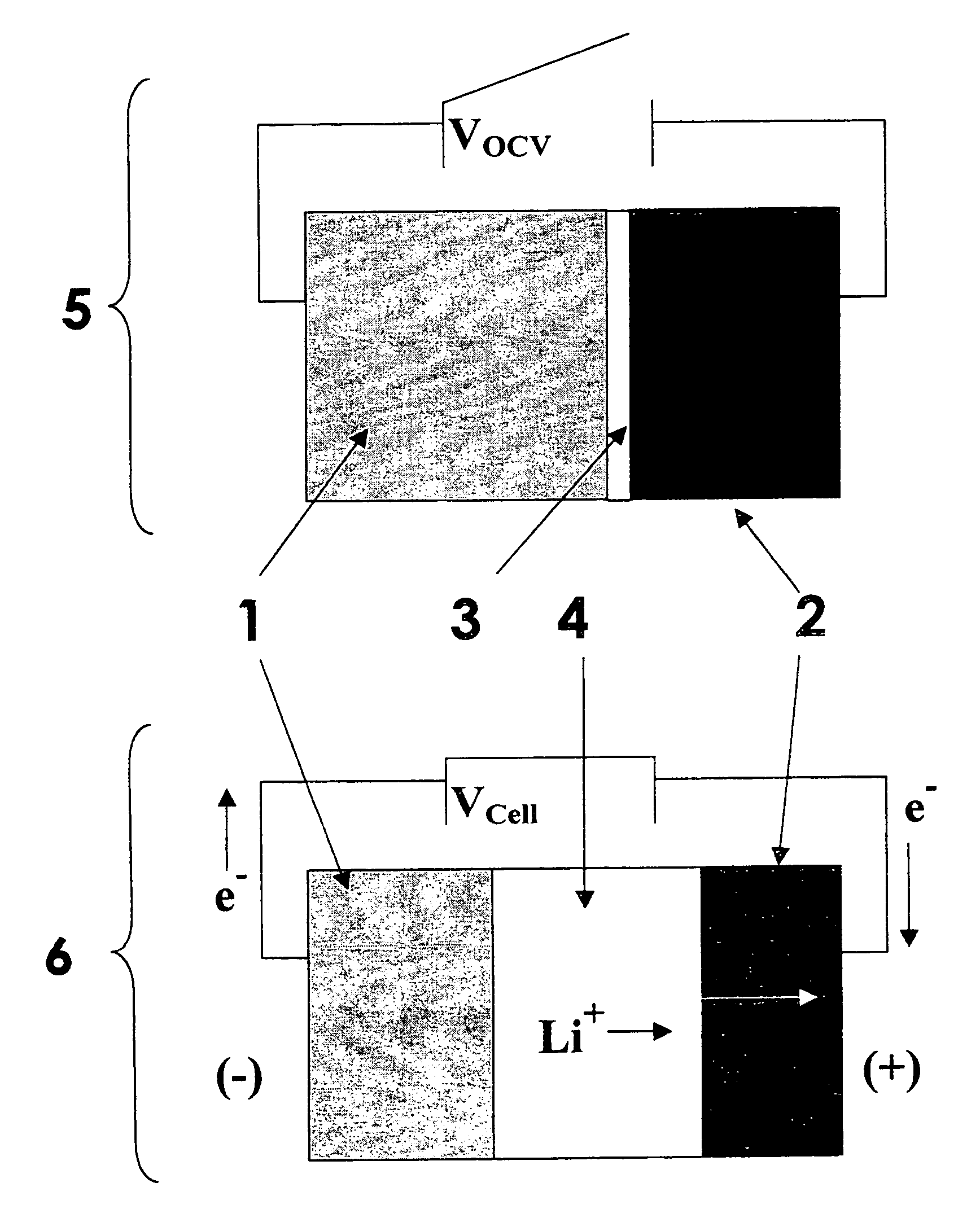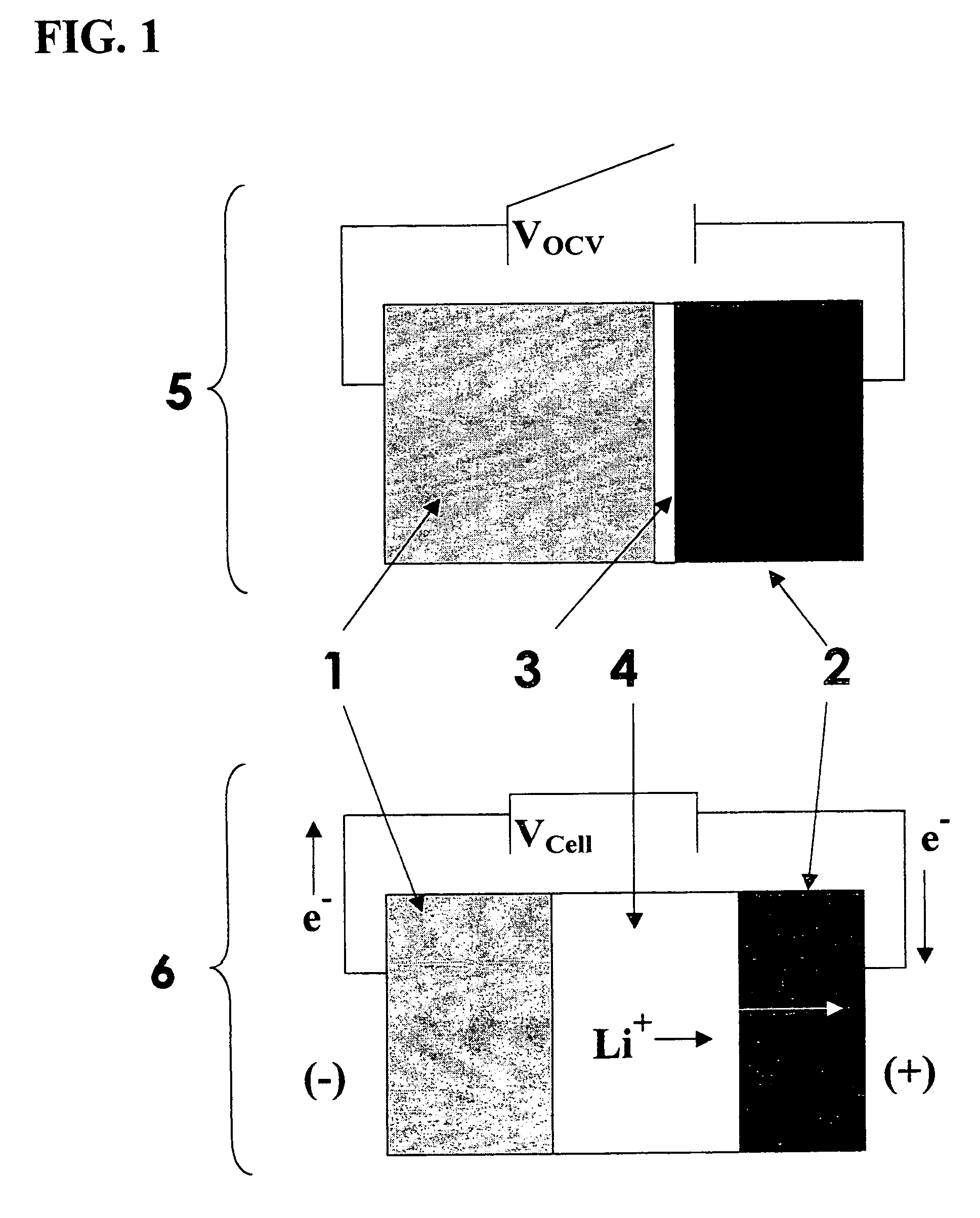Lithium battery
a technology of lithium battery and lithium battery, which is applied in the direction of non-aqueous electrolyte cells, cell components, electrochemical generators, etc., can solve the problems of reducing the percentage of active materials in the cell and the overall energy density, and achieves high reliability
- Summary
- Abstract
- Description
- Claims
- Application Information
AI Technical Summary
Benefits of technology
Problems solved by technology
Method used
Image
Examples
Embodiment Construction
[0021] The solid-state electrochemical cell of this invention comprises a lithium based anode electrode and a cathode electrode containing an electronically conductive allotrope of phosphorus. While there are a number of conductive forms of phosphorus that have been reported, each with slightly different properties, we will refer to them as a group herein as black phosphorus. The reaction between lithium and black phosphorus can produce lithium phosphide, a well-known Li-ion conductor, some forms of which have demonstrated very high ionic conductivity (˜10−3 / Ohm-cm).
[0022]FIG. 1. illustrates one embodiment of a cell of this invention wherein the cell is shown both immediately after assembly 5 and during discharge 6. In this embodiment, a lithium metal anode electrode 1 is placed in contact with a black phosphorus cathode electrode 2, immediately resulting in the formation of a lithium phosphide layer 3 at the interface due to the reaction of the lithium anode 1 and the phosphorus c...
PUM
| Property | Measurement | Unit |
|---|---|---|
| energy density | aaaaa | aaaaa |
| energy density | aaaaa | aaaaa |
| electrically conductive | aaaaa | aaaaa |
Abstract
Description
Claims
Application Information
 Login to View More
Login to View More - R&D
- Intellectual Property
- Life Sciences
- Materials
- Tech Scout
- Unparalleled Data Quality
- Higher Quality Content
- 60% Fewer Hallucinations
Browse by: Latest US Patents, China's latest patents, Technical Efficacy Thesaurus, Application Domain, Technology Topic, Popular Technical Reports.
© 2025 PatSnap. All rights reserved.Legal|Privacy policy|Modern Slavery Act Transparency Statement|Sitemap|About US| Contact US: help@patsnap.com


